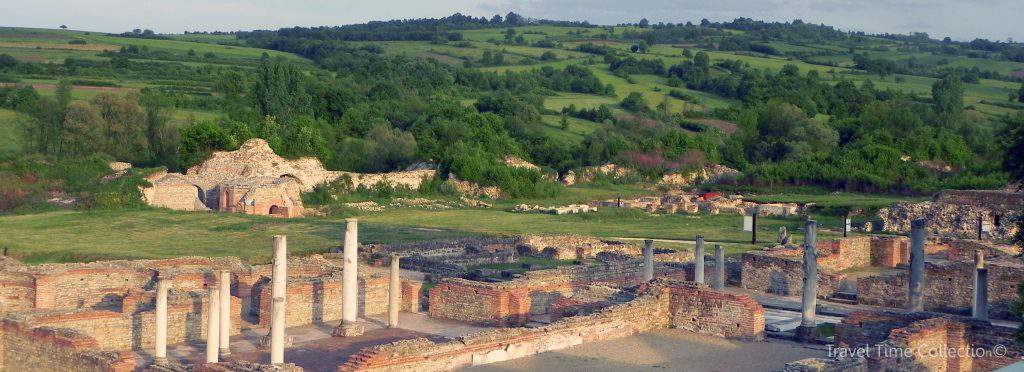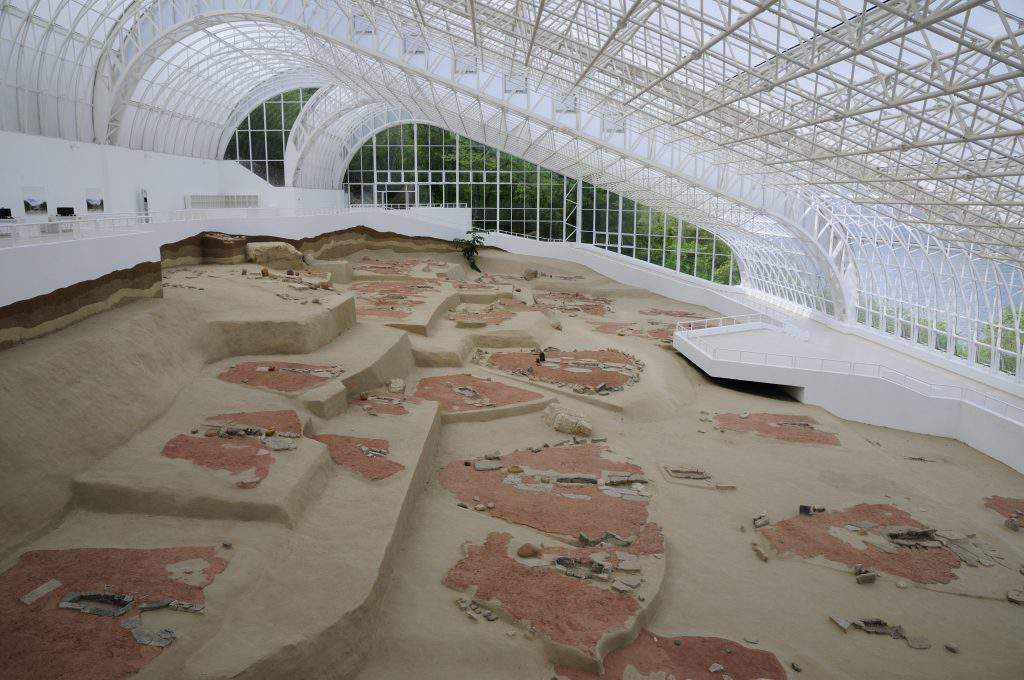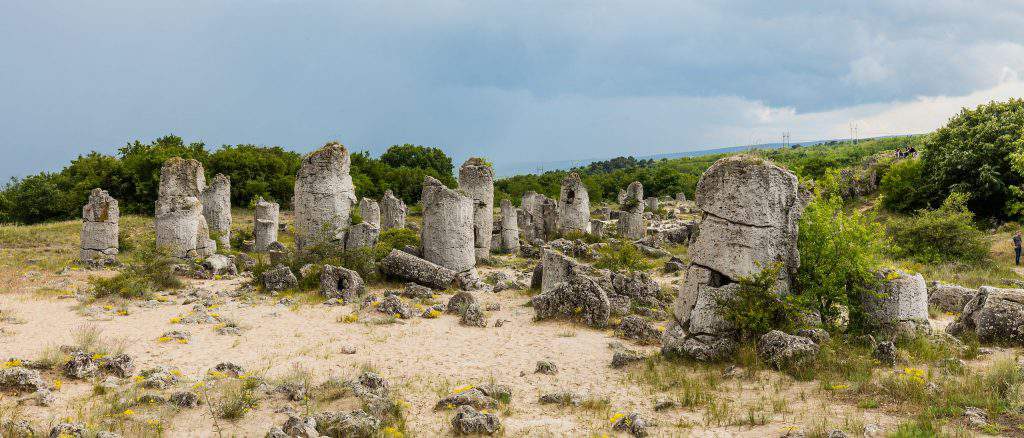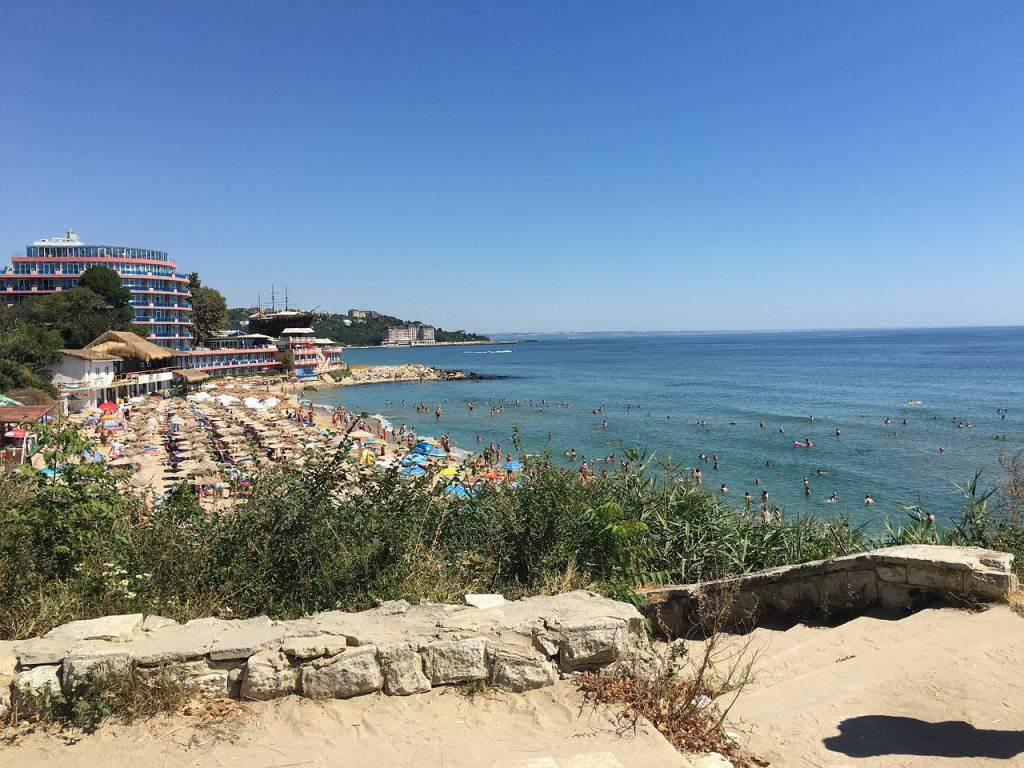Ten Steps from Budapest to Varna – Through the Balkan

According to Tropical Magazine, one of the hits of the summer is the Bulgarian coast. It is cheap, beautiful, there is golden sand and there is the Zlatni Pjaszaci (which translates to Golden Sands), which gives a retro feeling to parents and gives an opportunity to kids for some family fun. So all that the eye, the mouth, and all the other senses may want is here. It seems like a destination to reach by plane but if you would rather drive, you may bite off more than you can chew. Or, you just use this opportunity to have a joyful ride and get to know the 10 hidden gems of the Balkan.
Sremska Mitrovica
It is a detour to approach the Hungarian – Serbian border from Röszke, but if we want to avoid the crowd and traffic jams, we should cross the border at Tompa, where Sremska Mitrovica, the Hungarian Szávaszentdemeter, is right on our way. It is currently the western gate of Serbia, but it is generally closed. Ever since good old Yugoslavia was over, Serbia and Croatia’s relations have been fluctuating between organized cool and warlike hot. Thus, the capital of Syrmia is not really a popular place. Although it was once the capital, from 103 B.C it was Pannonia Inferior, and in 293, with the introduction of the tetrarchy system, it became the capital of one quarter of the empire. There were huge constructions in the 4th century – a complete imperial palace complex was built, from which the aforementioned region of the Empire was administered. It was only after the second world war, in 1952, that they discovered the palace quarter just below the city centre. The most incredible find, the former hippodrome has not been completely revealed, though it is unique among its kind, because the entire downtown would have to be dismantled to reveal it. But now that the country would like to revive the region’s tourism, a fancy, modern visitor centre was built above the palace.
Vinča
We must skip Belgrade now; it would be too much to handle. Instead, let us go a little further east. Vinča is 14 kilometres from Belgrade and the village, in all probability, is the longest-inhabited settlement in Europe with 8,000 years of history. What the village is most famous for is not the archaeological park but the Joint Institute for Nuclear Research and the docked boat restaurant serving fresh fished from the Danube. Once there used to be the biggest city in Europe, although this “once” was a really long time ago, approximately around 5000 B.C. when the Vinča culture blossomed and bloomed.

The broadly unified archaeological culture occupied significant areas in the Balkan. Many important sites are known from the Transylvanian Lower Tărtăria to the Southern Serbian Pločnik. Unfortunately, there is nothing to be seen from the former city now. The former city centre, now a grassy meadow, was excavated but had to be buried back to prevent it from falling down. There is a brilliant small museum in Vinča with a well installed exhibition and good English descriptions. Here we can learn about this amazing civilization and its life which is said to be the first golden age of the old Europe.
Lepenski Vir
It is a prehistoric site as well with quite unique natural environment which makes it worthwhile to visit. On the way there we can stop by at the Golubac Fortress. It is an interesting place also from the Hungarian history’s point of view; it is worth a quick stop. We are in the Đerdap National Park; whose dominant part is the Danube. It is here that the sloping, lowland river gets between the high mountains, it narrows and speeds up considerably. Its most spectacular part, Kazan Strait, was once the first settled village in Europe beside the Danube. This site was excavated in the second part of the last century and a visitors’ centre has opened to show the found artefacts. The larger part of the visitors’ centre is the former village itself which can be viewed. The slope of the former terrain is also clearly visible. (The cinema and the exhibition is behind / under the former village.) Now only the foundation of the houses can be seen but it can be concluded that they were made with woodcarving and reed roof. A reconstructed house was erected next to the visitor centre.

Gamzigrad – Romuliana
It is a good idea to stop at the well-known village with uncountable wine cellars, at Rajac to try their fine wine, then a small detour to Serbia’s most spectacular Roman memorial, the Felix Romula. Philipp Kanitz, an Austrian ethnographer, wrote: “Gamzigrad (as the ruins were called in Serbian) is undoubtedly one of the most important works of Roman architecture in Europe.” We have a really amazing sight to see, it is very rare to see such an impressively intact ancient city.
The walls are protected with more or less round-shaped towers, which at some places reach the height of ten metres and, are indeed the most spectacular elements of the whole ruin site. Entering the ornamental gate, we really feel like entering a Roman fort city. Galerius, one of the last pagan emperors of the realm, built this fortress to his mother’s honour – hence the name: Romula’s happiness.
Belogradchik
The Bulgarian border from Gamzigrad is just a few kilometres away, from there Vidin is close to reach too. But this time we don’t stop there, we make our way to a small sleepy town, to Belogradchik. It is worth to see the castle but it not the caste itself that is the most interesting there. The castle is just garnish to the cliffs. However fantastic they look, these are only natural formations. Back in the Triassic period, there was a shallow sea here. The hordes of rivers laid sand and sludge. Time and pressure made it to sandstone. In the sandstone harder conglomerates were formed, which are bound by iron oxide, the hematite. Then the sea disappeared, the area rose higher, fault lines emerged. Smaller or larger rivers, streams have dug riverbeds in the sandstone. The softer stone on the top of the protruding rocks was abraded by the wind. What is left is red, ferruginous, tougher rock.
Svestari
Driving alongside the Danube we pass by the most French city in Bulgaria, Ruse and if we turn towards the heartland, we will have the chance to see another piece of the ancient world. The 3rd century tomb, which is part of the UNESCO World Heritage List, was made for Dromichaetes, it is the eternal resting place of the gothic king. It was only discovered in 1982, which is quite understandable if we look at the hundreds of small hills in the neighbourhood and under each one could be a grave. (There isn’t a grave under all of them, the ancient people created fake graves to divert the attention of the grave robbers.) The tomb was not open for visitors for decades, but recently it has become the most well-equipped exhibition space in Bulgaria. We can walk through the gravestone and it is really beautiful. The area offers interesting sights throughout the day, including for example a Muslim pilgrimage site, a sacred spring and a ruin site.
Silistra
The city centre is only recommended for hard core Balkan fanatics. The memory of the Ottoman era is preserved by a spectacular fortress built in the 19th century. Designed by German military engineers, it was a modern fortress in that age (like the Fort of Komárom). Today it is a museum.
Balchik
Balchik is on the seaside – the most northern part of the Bulgarian seaside. Its gem is the palace built by Maria, the Romanian Queen in the first half of the 20th century. No matter what famous foreign architects and garden designers made it – it is essentially Balkan. It explains the Queen’s enthusiasm for her chosen (to be honest, received) home country. The palace carries the marks of Balkan architecture, it is not a large building but they designed a large number of smaller, different-function buildings in the large park. Besides the main villa, there is a wine cellar, a chapel, several guesthouses, where there is a hotel even today. It was of course the view that the queen liked best, as it was the view that grabbed her eyes when she first came here.

Pobiti Kamani
For nature lovers, the Pobitani Kamani National Park is a must-see, where one can jump and hide among stunning stones. It is practically impossible to believe that the stones are nature’s creations and not the remnants of a long-lost culture. The pillars, chambers are not ruins of former churches, they have just grown here.

Varna
At the end of our journey, just before we dive into the blue-black sea, Varna is also a program for Hungarians with historical interest as the symbolic grave of Ulászló I can be found here. He was the only Hungarian ruler who lost his life in a war beyond our borders. Even the somewhat schematic, uninteresting memorial park can be enjoyed with (male) children interested in sword fights and with the appropriate historical knowledge. At the grave of Ulászló I, we can find Hungarian labels too and there are the shingles still visible here and there, so we can spend an hour in the place. Finding it is not so easy but at least it is the János Hunyadi road that leads the traveller there, which compensates for the detours. Visiting the museum of the glorious (?) Bulgarian navy can be enjoyable too.

Source: by Tamás SZŰCS, Journalist specialized in foreign politics – Tropical Magazine





